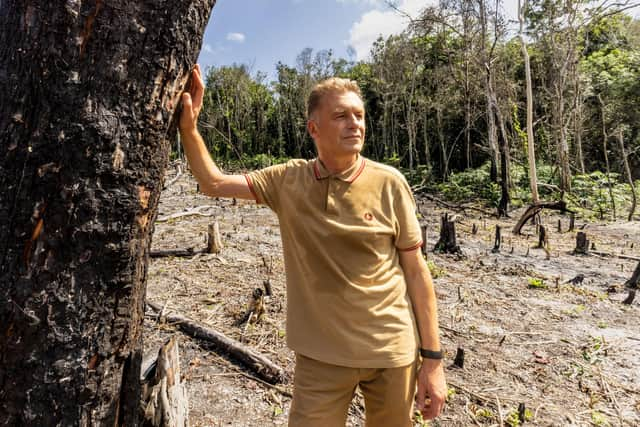It’s the last episode on Earth and Chris focuses on the atmosphere
and live on Freeview channel 276
No one can accuse this natural history series of being unambitious as it sets out to tell the story of Earth – all 4.5 billion years of it.
Luckily, that scope is what attracted presenter Chris Packham to the project. He says: “I liked the scale of the series, the fact that it was big. It was almost so big that it was going to be a challenge to be able to tell that story in a comprehensible way. And I like those sorts of challenges.”
Advertisement
Hide AdAdvertisement
Hide AdThe Springwatch regular adds: “Also I was very keen to explore how the geological aspects of our planet had influenced the living parts, and equally how the living parts had influenced the planet, the geology of the planet. That interplay over billions of years is fascinating. I think it will surprise many of our viewers.”


Of course, our planet’s story is still unfolding, and Chris hopes that the series may challenge the way some viewers think about Earth.
He says: “We look at the surface of the planet, and we imagine parts of it are permanent. We look at mountain ranges, big, solid lumps of earth, and we think that’s been there a long time. It’s going to be there a long time, but in fact, it’s not. It’s very transient. The surface of the planet has changed radically numerable times. So the permanence is something that we’ve got to put out of our mind. This is a moment. It’s not going to be like this forever.”
Of course, many people are already thinking about the ways in which the world is changing, and the threat of climate change. Next week, the series will conclude with a look at humans, finding out how the conditions arose that made it possible for us to thrive – and how we have shaped the world around us, for good or ill.
Advertisement
Hide AdAdvertisement
Hide AdBut it seems we shouldn’t expect Earth to be all doom and gloom.
Chris says: “I think the series’ underlying mission is to lead people with a sense of wonder, and also to an appreciation of just how precious our planet is and, indeed, even our species is.
“I’d like people to think, wow! What a place! There’s nothing else like it. It’s so unbelievably valuable, we can’t take it for granted in any way, shape or form.”
In the latest episode, Chris focuses on the atmosphere, exploring how our world went from being a barren rock with a black sky to the planet we know today. It’s a tale that begins 4.6 billion years ago, when Earth first formed from clouds of dust and gas. The young planet was devoid of an atmosphere, but as it was pummelled by asteroids a period of extraordinary upheaval began. Over the course of two billion years, Earth experienced violent eruptions and a toxic orange haze, not to mention the seas turning red. But with the emergence of life and photosynthesis, the gases began to recalibrate, and the stage was set for the blue skies we know today.